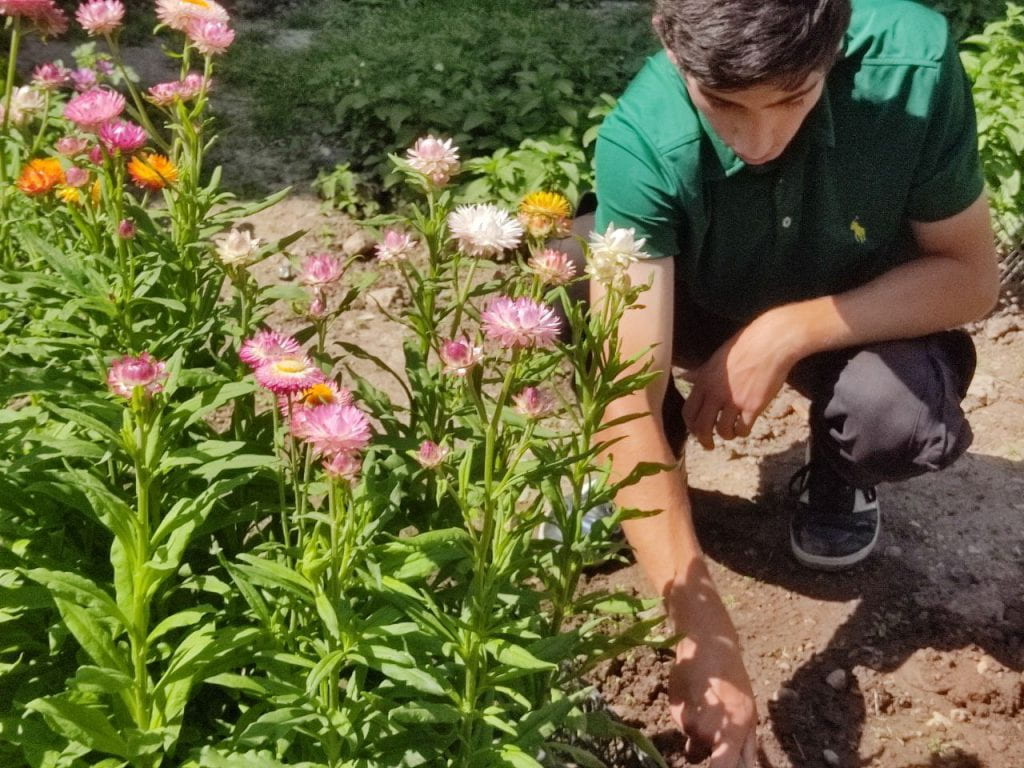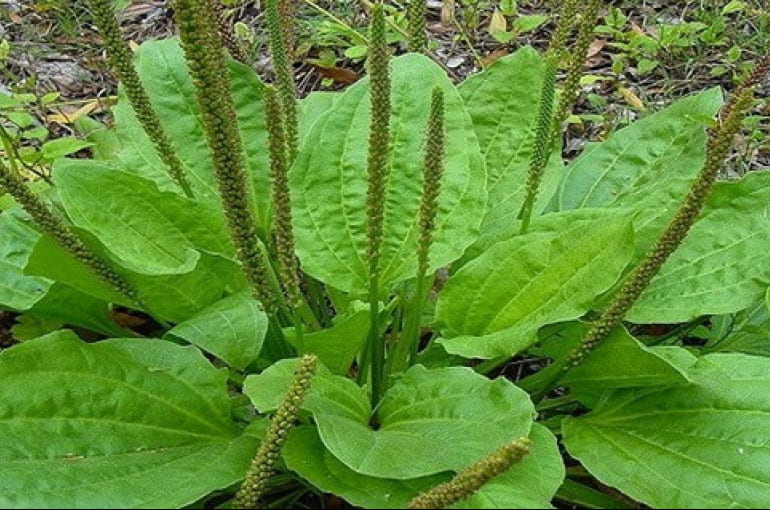Իրիկունը մեր դրսի տունը նստեր կը ճաշեինք, պապս`
— Ակոբ, — ըսավ, — գիշերը երազս մեր կարմիր եզը տեսա լեռը, քովս եկավ, երեսները երեսիս քսեց, լզեց, չըլլա՞ թե գլխուն փորձանք մը գա, վաղ առտու մորդ հետ եզնոցը դարը ելիք գացեք, նայեցեք մեկ մը մեր եզնիքը:
— Հա՜, — ըսի, — երազն ալ բան է, երազին ալ կը հավատացվի՞, ամեն մարդ շատ տեսակ երազ կը տեսնե գիշերը, իրա՞վ կ՚ ելլեն: Երազի մը համար մինչև Ղարա Սըրթը` եզնոցը դարը, ելլենք երթանք:
Պապս ձայնը բարձրացուց.
— Ակոբ, հեչ անասունի վրա գութ չունիս, հեչ մալի, տավարի սեր, փափաք չունիս. կորսվեր են, գլորեր են, տեղ մը կոտրեր է, հիվանդցեր են` հոգդ չէ. ծո՛ մեր ապրուստը անոնցմե է, եզը որ չըլլա` արտը ո՞վ պիտի վարե, կալը ո՞վ պիտի կամնե. եզան վաստակն է, որ կ՚ ուտենք, կովն ու ոչխարը որ չըլլան, կաթը, մածունը ուրկե՞ պիտի գտնենք, չըսե՞ս:
Մայրս, որ նստեր էր թոռներուն, այսինքն տղոցս կարգը, կինս, որ ունկվրայով ներսի տունեն թանապուր բերավ, լռեցին:
Մամս` Տերտիրանց Աղջիկը, որ սեղանին վերի գլուխը պապուս քով նստեր էր, եղբորը` Տեր Պողոսին բնավորությունը ուներ, խիստ էր, երկրորդեց.
— Պապդ ի՞նչ կ՚ ըսե` մտիկ չընե՞ս, չելլե՞ս երթաս: Մորդ հետ գացեք, նայեցեք ու եկեք: Երազները կ՚ ելլեն: Տանը տղան դուն ես: Ո՞վ պիտի երթա: Ի՞նչ ընենք, հա՞րսը ղրկենք:
Ալ չըսի, թե եզնիքը նույն տեղերը չեն մնար, ամեն օր տեղ կը փոխեն, Համիեն, Քեշիշ Տյուզիեն մինչև Տոստալի տակը, Եփրատը, Ղարա Սըրթի լեռն է, Եզնոցը Դարն է, ութը, ինը գյուղի եզնիքը կ՚ արածին, մեր գյուղինները ո՞վ գիտե` ո՞ր կողմն են:
— Աղեկ, աղեկ, վաղը առտու կ՚ երթանք, — ըսի:
Առտուն մութին մորս հետ ճամբա ելանք: Այնքան կանուխ, որ գյուղին դեմի Սուրբ Եղիայի բլուրը դարձանք, Պանտրծակ կ՚ ըսենք, անկե վար Խաչքարի դարվարին իջանք, անկե անդին ճամբան կը շտկվի, ճերմակ ալյուրի փոշիի պես Պարանհողքը կա, դիմացը ժայռերեն հոսող աշխարհի ամենեն անուշ ջուրերեն` Մամասալի ջրվեժը, ավելի վար, մեր աջը, նորեն ժայռերուն տակեն բխող Աղիջրակը եկանք, մուսմութ էր: Հոնկե դարվեր ելանք, խորունկ ձորերուն վրա նայող երկու կապանները կան, անոնցմե ալ անցանք ու նորեն դարվար իջանք, այգիներուն գետը Ղարապուտախը, անոր վրայի կամուրջեն Անծեղկայի հանդը եկանք. ին-ճին չկար: Իսկ գետին ձայնը աշխարհքը բռներ էր: Նորեն դարվեր ելանք, բարձունքը, մեր աջը` շատ վարը Թեղը, Թեղին այգիներր, մյուս կողմը, մեր ձախը` գրչիկներու առուն, որ Քաջտանի քարերեն կուգա մինչև հոդ որ եկանք` լավ մը լուսցավ, առտու եղավ: Վարը, պաղլեղի գույն գետին ջուրերը, Սուլթան Մաղարային, Քարին, Պատերուն, Եղիակին այգիները հատ հատ տեսնվեցան: Եվ երբ Քարնետած եկանք, ուրկե վարեն նշան առնելով քար կը նետեն, ինկած տեղը սահելուն կամ մնալուն համեմատ` հղիները աղջի՞կ, թե մանչ պիտի ծնին` կը գիտցվի, արևը կարմրցուց Սուրբ Գեորգին ճերմակ մատուռը, Լուսաղբյուրը, բռինչները, Ղասոյին ու Մախսոյին հանդիպակաց փարախները: Ղասոյին տղաքը այծերուն հոտը կը քշեին լեռն ի վեր:
Լուր մը առնելու համար ձորեն մինչև փարախները ելանք: Ղընեն` Ղասոյին կնիկը, նստեր էր դուռը, աղբակույտերուն դիմացը, երկու հարսները` Զուլալն ու Կոհառը, քուրդերն ալ, մեզի պես, Գոհար անունը ունին, ներսեն դուրս եկան, չգիտենք` ըսին:
— Միայն` երկու շաբաթ եղավ` ձեր գեղին եզնիքը Բերդհովիտի ետևներն էին, ետքը ո՞ւր գացին` ո՞վ գիտե: Անգամ մըն ալ ձեր եզնոցը հովիվը` Իպոն, Պեկտաղի գացեր էր, եկավ նստավ, Ղասոյին հետ խոսեցան, — ըսին:
Հարսները քրդական գոտիով ու քունքե քունք պղնձե կարմիր դրամներ շարած ճակատներով, մորս հագած Շամու գինեգույն էնթերին ու կապույտ չուխա սալթան շոշափեցին, «ղըզ, նե կյուզել տըր» ըսին ու հիացան:
Ալ չկեցանք: Լեռան մյուս կողմը վեց տուննոց ղզլպաշի գյուղ մը կար, Խել — մը — կա կ՚ ըսեն, հոն չգացինք: Ի՞նչ լուր պիտի կրնայինք առնել, նորեն ձորը իջանք: Ու Կարմիր Կապաններու կարմիր ժայռերու մեջեն` Հասան Թանառ ելանք, Ղարայ Սըրթի կապարագույն մասը: Այս տեղերը մեր գյուղին փայտի դարն էր, վառելափայտին լեռը, Կաղնեստաններու մեջեն ու եզերքեն քալեցինք, որոնք բացաստաններով կ՚ ընդհատվեին ու նորեն կը շարունակվեին: Հեռավոր հորիզոններով աշխարհ մը կար մեր առջևը: Բինկյանը երևցավ Սոսեկի լեռներուն փեշը, ավելի ճիշտը` գոգը, կապտավուն մշուշի մը մեջ, դիմացը` գետին մյուս կողմը, գյուղին այգիներն էին:
Դեղնուկի լանջքերուն տակ Զիմառան տեսանք, պարտեզներու ի՜նչ հոծ կանաչությունով մը շրջանակված: Ու Եփրատի հովիտը, ու Արջուկին Խանը, ու Քերվան Եոռանի ճամբան, որ կը ձգուեր ու կը ձգուեր: Մարդ չկար, բայց վախ ալ չկար, ո՞վ պիտի համարձակեր ծուռ նայելու մեզի, մեր գյուղին լեռներն էին, մենք ու խաշնարած քուրդերը կային, որոնք ձմեռը իրենց հոտերով Ղարապուտախի ու Եփրատի քարայրները կը ձմեռեին, իսկ ամառը Ղարա Սըրթի այս արոտները կը բարձրանային:
Գագաթի մը վրա, որ երկնքին կը դպեր կարծես, միակ կին մը կայներ էր հոտի մը մեջտեղը, որոնք իր շուրջը կ՚ արածեին: Քրդուհի մըն էր: Մինչև իր քովը չելանք, վարեն պոռացի,
— Է՜յ…Կաճճե՜…
Կինը մեզի դարձավ:
— Մեր Պզտիկ Արմտանին եզնոցը տեղը գիտե՞ս… Մեր Պզտիկ Արմտանի՜ն… Մեր Պզտիկ Արմտանի՜ն… Մեր Պզտիկ Արմտանի՜ն… եզնոցը տե՜ղը… եզնոցը տե՜ղը… եզնոցը տե՜ղը… գիտե՞ս, գիտե՞ս — գիտե՞ս…
Յուրաքանչյուր մասը խոսքիս` երեքական անգամ կրկնեցի, ինչպես կ՚ ըսենք մենք` հեռուեն հեռու, լեռնե լեռ երբ խոսելու ըլլանք: Ձայնս Ղարա Սըրթը բռնեց:
— Ի՞նչ կ՚ ըսես, — պատասխանեց:
— Կ՚ըսե՜մ թե… կ՚ըսե՜մ թե… կ՚ըսե՜մ թե…— պոռացի ու նորեն, որքան ձայն ունեի, յուրաքանչյուր խոսքս երեքական անգամ կրկնեցի.
— Նըզանը՜մ — նըզա՜նըմ — նըզանը՜մ, — պատասխանեց։
— Չեմ գիտեր` ըսավ: Ալ ի՞նչ պիտի ընես:
Տոստալ հասանք, որ նույնպես Ղզըլպաշի գյուղ մըն էր: Հողե տուները այնքան ցած էին, որ` փողոցեն տանիք ելիր, եթե կ՚ ուզես: Այծերը արոտ ղրկեր էին, կիները բաց դուռներուն մեջ մածուն կը հարեին խնոցիներով: Բակերը, փողոցները, ամենուրեք այծի սպլտուր ու մեզ էին, արևին տաքութենեն աղբ կը հոտեր գիւղը: Մքայել քեռիիս տոսթերն էին տոստալցիները, շատ կուգային քեռիիս տունը, մայրս որ տեսան` խնոցիները հարելը կեցուցին, թափեցան վրան: Քիպարային ու Սալմանին կնիկները մեր թևերեն քաշեցին, որ իրենցը երթայինք, բայց մենք մերժեցինք, մեր եզնիքը տեսնել եկեր ենք` ըսինք: Մեր Մեծ գյուղին եզնոցը գիշերած ձորը մեզ ղրկեցին, անպատճառ Եփրատին ափերը պիտի ըլլան, — հարեցին, — հովիվներեն կը հասկնաք ձերիններուն տեղը:
Գտանք, ինչպես բացատրեցին` խորունկ ու ջուրով ձորի մը մյուս կողմը, գետահայաց արոտավայրի մը վրա ցրված, կ՚ արածեին: Բաղաշտաշի դիմացը եկած էինք, մեր դեմի ափն էին տուները: Հովիվները` Վահանն ու Դանիելն էին:
— Ետ դարձէք, ե՜տ, ե՜տ, ե՜տ, — պոռացին մեզի իրենց տեղեն, մեր հարցումներին պատասխանելով, — Իպոն` ձեր հովիվը, ձեր եզնիքը Ղարապուտախի մյուս ափը անցուց, մյուս ա՜փը… մյուս ա՜փը… մյուս ա՜փը, — Ղափլան Ղայասիեն Իննսունիննեն գետը իջեք, գետը… գե՜տը… գե՜տը, — Ամըրքարի դարվերներեն Ճերմակ Քարտա՜կ ելեք… Ճերմակ Քարտա՜կ — Ճերմակ Քարտա՜կ, Խորան աղբյուրին կամ Դեղջուրին երեսները պիտի ըլլան, Խորան աղբյուրի՜ն… Դեղջուրի՜ն… Խորան աղբյուրի՜ն… Դեղջուրի՜ն… – հասկցա՞ք… հասկցա՞ք… հասկցա՞ք…
Խորան աղբյուրեն տեսանք: Դեղջուրի ձորին երկու երեսները կ՚ արածեին: Հասանք ու մտանք իրենց մեջ: Հովիվը` Իպոն, չկար, աղջիկը Նըզառեն կար, որ Թեփթացի երկու աղջիկներու հետ բոլորվեր, նստեր քար կը խաղային. տղոցմեն կրտսերը` Ասսոն կար, որ Կախմխցոնց տղոցը հետ հովիվներուն լեռը խաղցած տեսակի չալուկ կը խաղային: Նըզառեն մեզ տեսավ ու վազեց, եկավ:
— Եզնիքը տեսնել եկանք, — ըսինք ու շրջեցանք, ամեն եզին քովեն անցնելով ու նայելով: Մեր երեք եզները տեսանք, նույնպես կնոջս Մարանցինները, Կորջայենցիները, Քեռոնցինները, որոնք խոտերը փրթցնելով ու ուտելով, կ՚ ընթանային: Լեռը ու գիշեր-ցերեկ երեք ամսվան բացօթյան ինչպե՜ս գեղեցկացուցեր էին զիրենք: Սևերը ավելի սևցեր, ճերմակները ավելի ճերմակցեր, գորշերը ավելի գորշացեր էին: Ամենուն կոտոշները կը փայլեին: Եզ մը կար, մանավանդ, նայեցանք ու նայեցանք, ու հիացանք: Արևեն կը շողային աչքերը, շուրթերը, ճակատը, թարթիչները, մազերը: Ի՜նչ հոյակապ էր, բարձր սրունքներով: Մազերուն գույնը մեր կարմիր եզինին կը մոտենար, բայց ասորինը կարմիր ալ չէր, կրակի, բոցի, արևի գույն մըն էր: Եվ հետո` մերինին երկու անգամն էր:
— Արո՞ւ եզն է, — հարցուցինք Նըզառեին:
Շրթները վերցուց:
— Աղջի, մարդու պես չխոսի՞ս, որո՞ւնն է, — հանդիմանեց մայրս:
— Ի՞նչ գիտնամ, Նանե հարսիկ, պապաս գիտե:
Մորս Նանե հարսիկ կը կանչեր:
Ասսոն ալ չէր գիտեր: Մեծ եղբայրը` Տիապը ըլլար, գիտեր, թե որունն է, ըսավ:
Բայց մեր կարմիր եզը չտեսանք, չկար: Նախապես չկասկածեցանք, որևէ կողմ մը կ՚ արածի` խորհեցանք, բայց ավելի վերջը, երբ երկու ձորերուն հետին անկյունները ժուռ եկանք ու փնտրեցինք, իրար անցանք: Չկար:
Առտուն պապաս համրեց` լման էին, — պնդեց Նըզառեն:
— Էներուն նայինք մեկ մըն ալ, — ըսավ մայրս, — չըլլա՞, թե լեռը մազերնուն գույնը փոխե ու չճանչնանք:
Որունին, որ եզուն նայեցանք, մեր տան էները չունեին:
Եզներու մեջ ամենագեղեցիկին, բարձրասրունքին, արևափայլ մազերովին մոտեցա: Չխրտչեցավ, թողուց:
Ու մեկեն չհավատացի, ապշեցա: Մեր էնե՜րն էին: Աջ ականջին տակը իմ նշաննե՜րս էին, իրարմե բաց, երեք հատ: Մեր ե՛զն էր: Այս ի՛նչ էր ըրեր լեռը, ի՜նչ արևաշող թարթիչներով, արևաշող ճակատով ու աչքերով եզան մը փոխեր, պայծառակերպեր էր: Ամենեն անվանի արձանագործը եզան մը արձանը շինելու ըլլար, այս աչքերս խտղող, այս արու գեղեցկությունը պիտի չկրնար տալ: Երազին մեջ պապուս երեսները լզածին պես` երեսներս լզեց:
Իրիկունը՝ մեր ընթրիքի ամենօրյա պահուն, ինչպես միշտ` լուսաչոք, երբ սեղան նստանք ճաշելու, մի առ մի պատմեցի:







